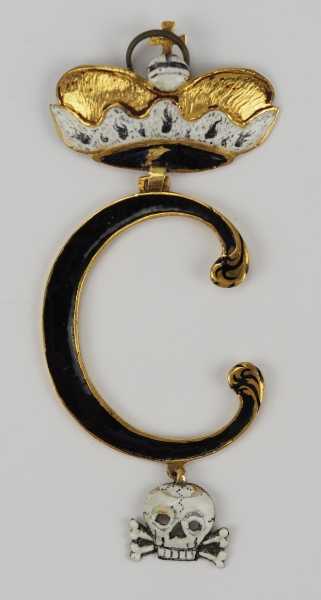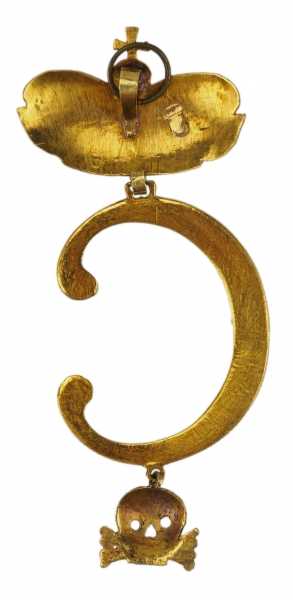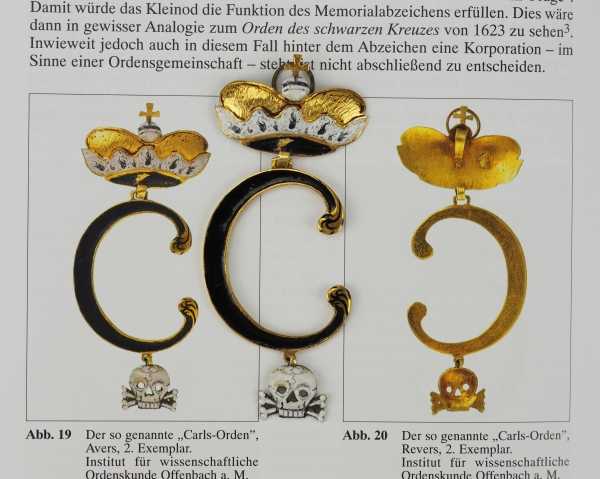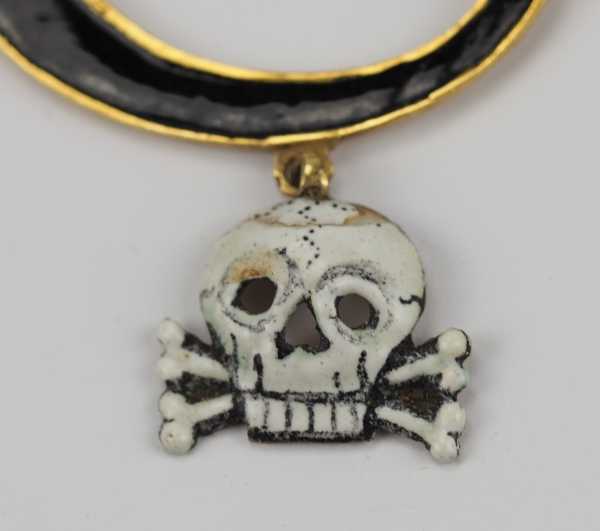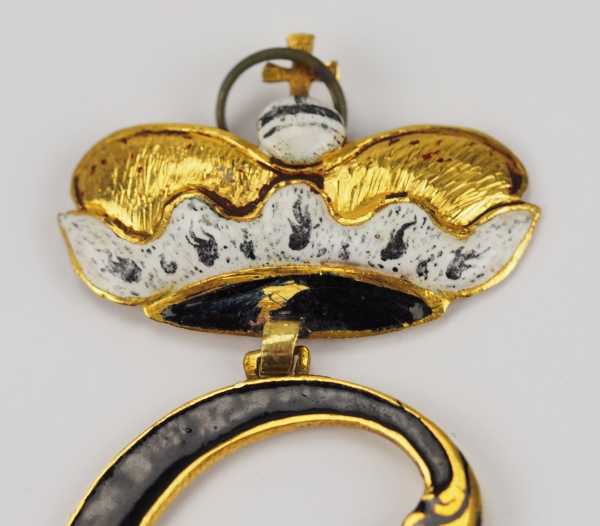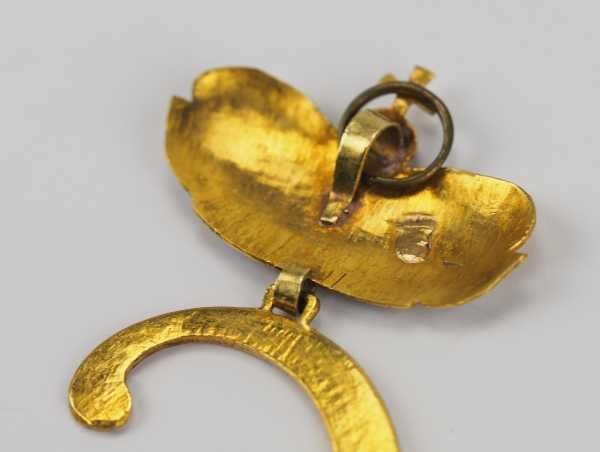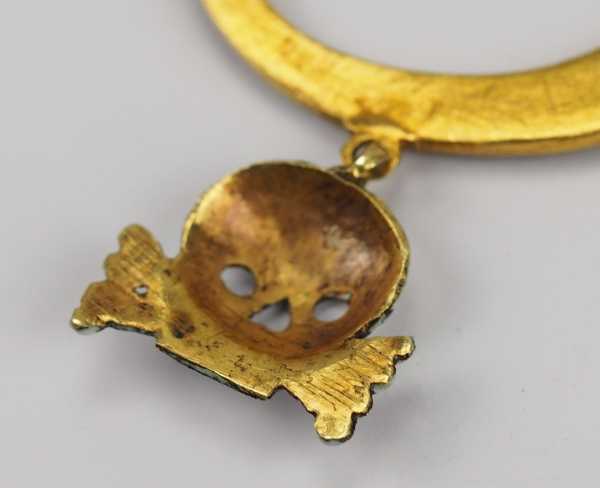4
1.1.) Kaiserreich (bis 1933) Baden: Der so genannte "Carls-Orden".Gold, das geschwungene C schwarz
In 13th Auction
13th Auction
Sale Date(s)
Venue Address
For Bene Merenti Auktionen delivery information please telephone +49 (0)711 76165844.
Important Information
23 % buyer’s premium including VAT
3 % internet surcharge plus VAT
Terms & Conditions
General Terms and Conditions
1. APPLICATION FIELD
1.1 The auction conditions of the BENE MERENTI GmbH (subsequent: „auctioneer“) are regarded for all auctions and the related legal transactions. Any purchase conditions that contradict with the stated Terms and Conditions of the BENE MERENTI GmbH can only be agreed by the auctioneer in written form. In case a contradition is excluded, the general lawfull terms and conditions will be taken.
1.2 Auctions happen in the name of the BENE MERENTI GmbH and for invoice of consignors, which remain nameless.
2. IMPLEMENTATION OF AUCTION
2.1 The auction normally takes place in the order of the catalogue. Changes of the order and the combination or separation of catalogue numbers remain reserved.
2.2 The amount of current exclamation and current growth rate stays in dutiful discretion of the auctioneer. The growth rate as per norm is 10%.
2.3 Written bids has to be received one day before the auction takes place and has to name item with designation of the catalogue number and the bid (award price without surcharge and sales tax). Obscurities or inaccuracies are for bidders account. The auctioneer isn't liable to inform the written bidder about omission of his bid. Written bids are treated like bids of attendants. The auctioneer will only make use of the amount that will be necessary to overbid others. In case a bidder does not get his bid, due to a mistake in entering the bids into the absentee-bidder list, any form of claim damages will be contradicted.
2.4 Bidders by phone promise to bid at least the valuation price according to the catalogue. Consequently this takes effect if they aren’t available by phone during the auction.
2.5 The auctioneer can exclude people from the auction and is able to refuse bids. This is specifically valid for bidders who aren’t known of the auctioneer or if there isn't yet a business relationship and the bidder doesn't provide security in the requested amount till the end of the auction. A demand for acceptance of a bid doesn't exist neither in case of a bailout.
3. Sale
3.1 The sale will be granted if there’s no overbid after three appeals of a bid.
3.2 The auctioneer can allocate with reservations. This is specifically valid if the knockdown price set of the deliverer - isn’t reached. In this case the bid expires after four weeks from the day of the award on, unless the auctioneer informs the bidder during this deadline about the unconditional assent to the offer.
3.3 If more than one bidder quote the same bid, the auctioneer is able to decide at his own discretion who will get the award or he can use a lot in order to decide.
3.4 If the auctioneer misses a higher bid or if doubts are in existence about the award he is able to repeat the award in favor of a definite bidder or to offer the item again till the end of the auction. In this case a preceded award is effectless.
4. PURCHASING PRICE
4.1 The purchasing price is made up of the surcharge price, the extra charge of 23% and eventually of the side costs, e.g. for storage and shipping.
4.2 The purchasing price includes the legal sales tax (differential taxation by § 25a valued added tax act), which won’t be shown separately. While using the regular taxation the discounted rate of taxation of 7% will be calculated to the total price (award price plus 21% surcharge = total price plus 7% purchase tax). In case of a disavowal of rating into the discounted rate through the revenue the auctioneer is qualified for demanding the insufficient collected tax for corresponding proof later. Under certain qualifications export shipments are free of sales tax. If these qualifications exist and the corresponding export certification is performed timely, payed sales taxes will be refunded.
5. PAYMENT OF PURCHASING PRICE, DELAYED PAYMENT, COMPENSATION
5.1 The purchasing price is due in the full amount and together with the surcharge of payment. Payments is to be made by cash in EURO to the auctioneer. On demand of the auctioneer foreign bidders have to submit certified checks already before the auction takes place.
5.2 If the purchaser is to default with the purchasing price, the auctioneer can demand - unscathed further rights - default charges in the amount of 5% over the base rate. If the auctioneer demands compensation because of default and the item will be under the hammer again, after a setter grace from the auctioneer with threat of denial has passed, the purchaser, whose rights of the preceding award are expired, is liable next to the costs for storage as well for the lost fee of the auctioneer of the preceding auction as for a possible loss. In this case the bidder isn't approved for further bids. Furthermore the auctioneer is able to charge compensation in the hight of 25% of the hammer price.
6. ACCEPTANCE, DELIVERY, COMPENSATION
6.1 The award commits for acceptance. With the acceptance of a bid, all risks especially the risk of a random decay and a random decline of the item develop upon the purchaser.
6.2 The purchaser has to pick up the item immediately at the auctioneer, eight days after the award for the latest. If he is in delay with this obligation and the collection isn't made in the face of a final deadline because of delay, the auctioneer is able to demand compensation with the measure that he can auction the item off again and he can calculate his loss the same way as with a delayed payment of the purchaser. Thereof save the auctioneer can demand a general compensation in the amount of 5,00 € per item and per day from the moment of delay. The proof of a little damage is reserved to the purchaser.
6.3 A shipping of the item happens at the expense and risk of the purchaser, whereupon the auctioneer decides the mode of shipment in his sole discretion. The costs for shipment can be seen in the current printed catalogue.
6.4 The auctioneer isn't obligated by numeral 4.1 to give the item before the full amount of the purchasing price has been payed. The property stays reseved until the full settlement.
7. GUARANTEE
7.1 The items can be viewed and proofed previous to the auction. They are used and will be awarded without liabilities of the auctioneer for defects.
7.2 Save of exclusion of the guarantee by numeral 7.1 the auctioneer will forward reporter claims of the purchaser during the legal warranty period to the deliverer as long as it isn't impossible for him on real grounds
7.3 The descriptions in the catalogue happen to the best of knowledge of the auctioneer, they aren’t a confirmation of properties in sense of §§ 459 ff German civil code. Founded claims concerning to originality have to happen during 30 days after the auction.
7.4 Special guarantee: The originality of items for lots printed in part 1 of the auction catalogue (medals and decorations) is guaranteed explicitly.
7.5 The auction catalogue published in the internet is just for informations. Decisive for the auction is the printed version. In case that no printed catalogue is made the one published in the internet takes place of it. This one will be the essential one with all corrections made by the auctioneer at the day of the auction in case some will be necessary. These corrections will be noted on a printout of the catalogue at the business premises and stay deposited ibidem.
8. COMPENSATION OF THE AUCTIONEER
8.1 Liability against the auctioneer plus against his vicarious agents in comparison with the auction or trade or performance of this contract are impossible for whatever legal reason.
8.2 This isn't valid for damages, which bear on a willful or grossly negligent conduct of the auctioneer plus his vicarious agents.
9. MISCELLANEOUS AGREEMENTS
9.1 For legal relationships between auctioneer and purchaser the right of the Federal Republic of Germany is valid. The use of the law about international purchase of flexible items plus the uniform law of the trade of international contracts of purchase of flexible items is impossible.
9.2 It is agreed that Stuttgart is the place of performance and venue in business connections with merchants who are according § 1 HGB till § 7 HGB designated tradesmen by law. In business connections with forensic persons, with special funds under public law and persons, who have their main office outside Germany, it is agreed, that Stuttgart is the place of performance and venue.
9.3 The auctioneer is committed to utmost care and vigilance in dealing with historical objects from the period of the National Socialism as safety for the publicity and with consideration for foreign customers.This objects won’t be exhibit publicly. Title and designation were assumed in the catalogue description as in common usage. Therewith no judging is related. Visitors who want to see items from the period of National Socialism and who aren’t known by the auctioneer are requested to fill in a form with their area of collection. Coincident the notice of §§ 86, 86a criminal code and their strict obedience will be promised. Written bidders who aren't known by the auctioneer himself are asked to indicate their style and purpose of their area of collection if they want to bid for items from the period of National Socialism (e.g. structure of a collection about proceedings of current affairs, like the 2nd world war, the armed forces, etc. based on scientific principles).The auctioneer accepts only bids of bidders who commit to strict obedience of §§ 86, 86a criminal code. By not saying something converse, owner of the catalogue, participants of the auction and bidders assure that they purchase the catalogue and the imaged therein items from the period of National Socialism just for purchase of civic enlightenment, for defense of unconstitutional ambitions, for art, for science, for research, for reporting about proceedings of current affairs or for history or similar purposes (§§ 86a, 86 criminal code). The auctioneer provides this items and the catalogue only under these conditions. This will be admitted explicit by making a bid.
9.4 It doesn't affect the virtue of other clauses if single clauses are or will be inefficient. Virtue clauses which are the closest to the economic purpose of the inefficient compensates the inefficient. The same is valid for omissions.















